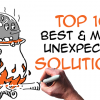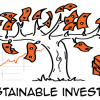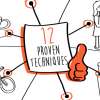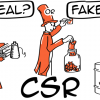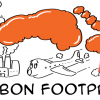Transcript
3 questions to make sustainable decisions
Decision making for socio-ecological sustainability can seem complex and daunting. So many factors are at play. So, how can you make sure that you make a good sustainability decision? Like with many other things, tools and frameworks can be very helpful. Here are three strategic questions to help you make good sustainability decisions. We will go through them and apply them to a real life example. This is also part of the D step of the ABCD methodology presented in a previous video.
Question number 1: Is it a move in the right direction? Is this decision going to take us closer to where we want to be? Closer to our vision? Here is an example: as it prepared to host the winter Olympic games in 2010, the town of Whistler (Canada) had to face an increasing energy demand. The heating needs had long been provided primarily by propane delivered by rail and trucks and distributed by pipes. Knowing that the existing propane system had reached its capacity, the municipality turned to natural gas provider Terasen Inc. for suggestions. Answering this first question, Whistler looked at the extent to which bringing a high-pressure natural gas pipeline (for a cost of approximatively 43 million dollars amortized over 50 years) would be aligned with their Whistler 2020 plan for a long term sustainable future, defined by the 4 system conditions for sustainability (watch the video linked and in the description for a reminder). Converting from propane to natural gas would provide a 15% reduction on greenhouse gas emissions which would also reduce contribution to the first and second system conditions. Natural gas can also be used for vehicles. Building the pipeline while building the road was an opportunity to limit the degradation of nature by physical means (third system condition). Terasen suggested a bigger, lower-pressure pipeline so it could be installed within the highway shoulder, saving costs while meeting the legal requirements and helping Whistler make sure that the project was well aligned with their social sustainability goals (fourth system condition). The revised project was going in the right direction according to the Whistler 2020 plan. It is important to have a robust and ambitious sustainability vision for this question to be a powerful way to make good sustainability decisions.”
Question number 2: Is it a flexible platform? We are not going to reach sustainability over night. When we take action, we need to make sure that we are not going to lock ourselves into a dead end. We need to make decisions that provide enough flexibility so we can build upon them and allow for future opportunities and technologies that might not be known yet. In the case of Whistler, natural gas being a fossil fuel and therefore a finite resource, they found that they didn’t want to lock themselves into a 50 years amortization period. They asked Terasen to revise their proposal. The revised project decreased the capacity of the pipeline by half and forced Whistler to make a conscious decision to look into alternative energy systems. They decided to put in place geothermal heating and to use natural gas only as a backup system to be used during peak hours.
Question number 3: Does it provide a good return on investment? It does not do anybody any good if an organization trying to become sustainable goes bankrupt. It is critical that every decision made provides a good return on investment. In the case of Whistler, going with a lower pressure pipeline and decreasing its capacity by half reduced the project cost by about 10 million dollars. This made it possible for Terasen to charge customers rates that were competitive with electricity while providing a good return of investment for Terasen and for the community of Whistler.
There you have it! Three strategic questions to consider to help you make sustainable solutions: Is it a move in the right direction? Is it a flexible platform? And, does it provide a good return on investment? In our example, working together as partners, the municipality of Whistler and Terasen were able to come up with innovative solutions that served both parties. Having a robust long term plan as well as tools and frameworks can help you think out of the box, revise existing projects and solutions and come up with new innovative ones for your organization or your community.
I will be back with more sustainability tools in video. If you found this useful, please subscribe. Sustainability Illustrated is a non-profit project. You can support it by making a donation on our Patreon page. And as usual, thank you for watching.


